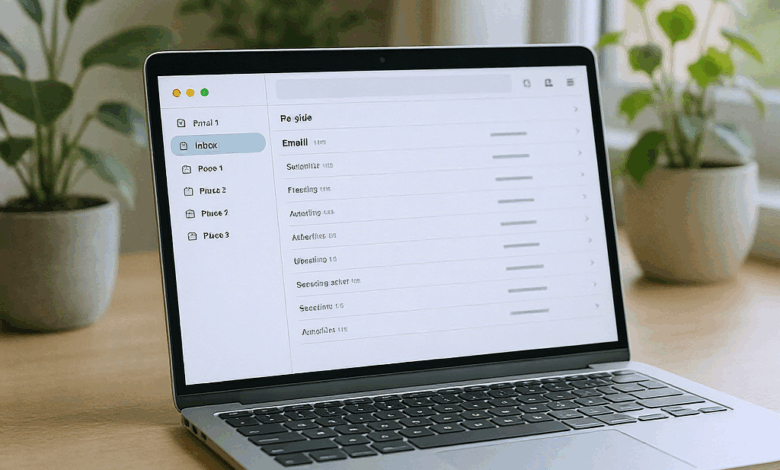Master Eco-Friendly Email Campaigns with These Simple Techniques

Have you ever paused to consider the hidden environmental cost behind that daily stream of emails landing in your inbox? I found myself reflecting on this not long ago, scrolling through countless marketing emails and wondering: Could there be a way to communicate effectively without contributing to digital waste?
It turns out, the surge in eco-conscious consumerism has sparked a fascinating shift in how businesses approach email marketing. Instead of bombarding inboxes indiscriminately, companies are rethinking their strategies to embrace greener practices that resonate with an increasingly aware audience. But what does running an eco-friendly email campaign actually involve, and how feasible is it for busy marketing professionals or business owners to implement?
This curiosity led me down an intriguing path, uncovering methods that combine efficiency with environmental responsibility. From trimming email lists to crafting minimalist designs, these approaches not only reduce carbon footprints but also enhance engagement by delivering more relevant content. Imagine transforming your email campaigns into vehicles that reflect your brand’s commitment to sustainability—without sacrificing impact or reach.
In the sections ahead, we’ll explore practical, step-by-step techniques that demystify eco-friendly email marketing. Whether you’re looking to optimize send frequency, choose energy-efficient hosting, or weave authentic sustainability stories into your messages, there’s a clear path forward. Along the way, we’ll touch on inspiring examples of brands that have successfully balanced marketing goals with green initiatives, proving that sustainable practices can indeed be part of winning business strategies.
So, are you ready to rethink your email campaigns and embark on a journey that benefits both your audience and the planet? Let’s dive into these accessible and effective techniques that make eco-friendly email marketing not just an ideal, but an achievable reality for you and your business.
What Makes an Email Truly Eco-Friendly?
I found myself wondering, how can something as intangible as an email have an environmental footprint? It seems counterintuitive—after all, it’s just data flowing invisibly through the web, isn’t it? But recent insights reveal that every email sent consumes energy, from the servers humming in data centers to the devices lighting up your screen. This tiny digital action, multiplied by billions daily, adds up to a surprisingly hefty carbon footprint.
Understanding this reality is the first step towards making our digital communications greener. So, what exactly defines an eco-friendly email campaign? It’s about minimizing unnecessary sends, optimizing content to reduce data load, and choosing sustainable technologies behind the scenes. It’s a blend of technical savvy and ethical intention.
The Background: Why Should Marketers Care About Sustainability?
Marketing has traditionally been about visibility and reach, sometimes at the expense of resource use. But as consumers grow more eco-conscious, the pressure to align brand values with sustainable practices intensifies. According to a recent analysis by Lacewing Media, integrating sustainability into marketing isn’t just a trend—it’s becoming a business imperative. Brands that transparently communicate their green efforts often build deeper trust and loyalty.
Email marketing, being one of the most direct communication channels, holds unique potential. It can educate, inspire, and gently nudge audiences towards eco-friendly behaviors while reflecting the brand’s commitment to the planet.
Core Techniques for Eco-Friendly Email Campaigns
-
Regularly Clean and Segment Your Email List
Think of your email list like a garden—if you keep watering every inch, including the weeds, you waste resources. Removing inactive subscribers and invalid addresses reduces the number of needless sends, cutting down energy use. Segmentation ensures messages are relevant, increasing engagement and avoiding the digital clutter that fatigues recipients. Farnlabs emphasizes that this practice not only benefits the environment but also boosts campaign efficiency. -
Design with Minimalism and Efficiency in Mind
Heavy images and complex HTML code increase email size, requiring more energy to transmit and load. Lightweight, clean designs with optimized images shrink data size. Selecting templates that are mobile-responsive and support dark mode also contributes to energy savings, especially considering that over half of emails are opened on mobile devices nowadays, as noted by e-shot.net. -
Be Intentional with Timing and Frequency
Rather than sending frequent, generic emails, consolidate your messages and schedule sends based on recipient behavior and time zones. Automation tools can help tailor delivery, minimizing unnecessary server load. Lite14.net highlights how responsible sending practices reduce the carbon footprint while enhancing user experience. -
Choose Energy-Efficient Email Service Providers
The choice of hosting matters. Providers powered by renewable energy sources or committed to carbon neutrality significantly lower the environmental impact of your campaigns. It’s a behind-the-scenes decision that reflects your brand’s sustainability ethos. -
Incorporate Sustainability Narratives and Calls to Action
Beyond technical tweaks, embedding authentic stories about your company’s environmental initiatives or encouraging subscribers to participate in circular economy actions can deepen engagement. Gamification elements, like tracking carbon savings or planting trees through user actions, can make sustainability tangible and rewarding. Ecosend.io discusses how such interactive approaches transform passive recipients into active participants.
A Step-by-Step Approach to Launch Your Eco-Friendly Email Campaign
Step 1: Audit Your Current Email List
Use analytics tools to identify inactive contacts and remove them. Segment your audience based on engagement levels and preferences.
Step 2: Redesign Your Email Templates
Simplify layouts, compress images, and test responsiveness on mobile devices. Consider dark mode compatibility to reduce screen energy usage.
Step 3: Plan Your Content Strategically
Craft messages that are concise, purposeful, and packed with value. Integrate stories about your company’s sustainability efforts or tips for subscribers to live greener lives.
Step 4: Select an Eco-Conscious Email Service Provider
Research providers with transparent commitments to renewable energy and carbon offsetting.
Step 5: Schedule Sends Thoughtfully
Leverage automation to send emails at optimal times tailored to recipients’ time zones and engagement patterns.
Step 6: Measure and Iterate
Track open rates, click-throughs, and subscriber feedback. Adjust frequency, content, and segmentation to continuously improve both impact and sustainability.
Practical Tips and Precautions
- Avoid overusing large images or videos; instead, link to content hosted externally where possible.
- Encourage subscribers to opt for digital-only communications to reduce paper waste.
- Be transparent about your sustainability efforts; greenwashing can damage credibility.
- Monitor the evolving landscape—sustainability standards and technologies are rapidly advancing.
From Theory to Practice Can You Try This Now?
If you’re reading this and thinking about your next email campaign, why not take a small but meaningful step right now? Start by cleaning your email list—remove those inactive addresses that silently drain resources. Or experiment with a minimalist email template optimized for mobile and dark mode.
Wouldn’t it be intriguing if each email you send not only connects with your audience but also honors a commitment to the planet? As marketing professionals and business owners, we hold both the tools and the responsibility to reshape digital communication. The challenge lies not just in knowing what to do, but in embracing these practices with sincerity.
So, what’s your next move in this eco-friendly journey? Could your emails become more than messages—could they be acts of sustainability? Let’s keep thinking about this together.

Looking back on the journey through eco-friendly email campaign techniques, it becomes clear that sustainability in digital marketing isn’t just a lofty ideal but a practical path forward. By thoughtfully trimming email lists, embracing minimalist designs, timing sends intentionally, choosing green service providers, and weaving authentic environmental narratives, we don’t merely reduce carbon footprints—we create campaigns that resonate deeper and engage smarter. This approach ultimately means our marketing efforts can serve a dual purpose: connecting meaningfully with audiences while honoring our planet’s limits.
What stands out is how these steps reflect a broader shift in business ethos, where responsibility and effectiveness are no longer at odds but intertwined. The value you gain from adopting these practices extends beyond greener inboxes; it’s about building trust, fostering loyalty, and positioning your brand as a conscientious leader in a rapidly evolving marketplace.
So, why not take a moment to act? Begin by auditing your current email list or experimenting with a streamlined template designed for efficiency. These small, deliberate actions can set off a ripple effect—both in reducing environmental impact and enhancing your campaign’s relevance and reach.
Looking ahead, as technology evolves and consumer awareness deepens, the demand for sustainable digital communication will only grow. Embracing eco-friendly email marketing today positions you at the forefront of this transformation, ready to adapt and thrive.
Ultimately, the question remains: can your next email be more than just a message—could it be a meaningful step toward sustainability? Let’s keep exploring this question together. What will your next move be on this green journey?





